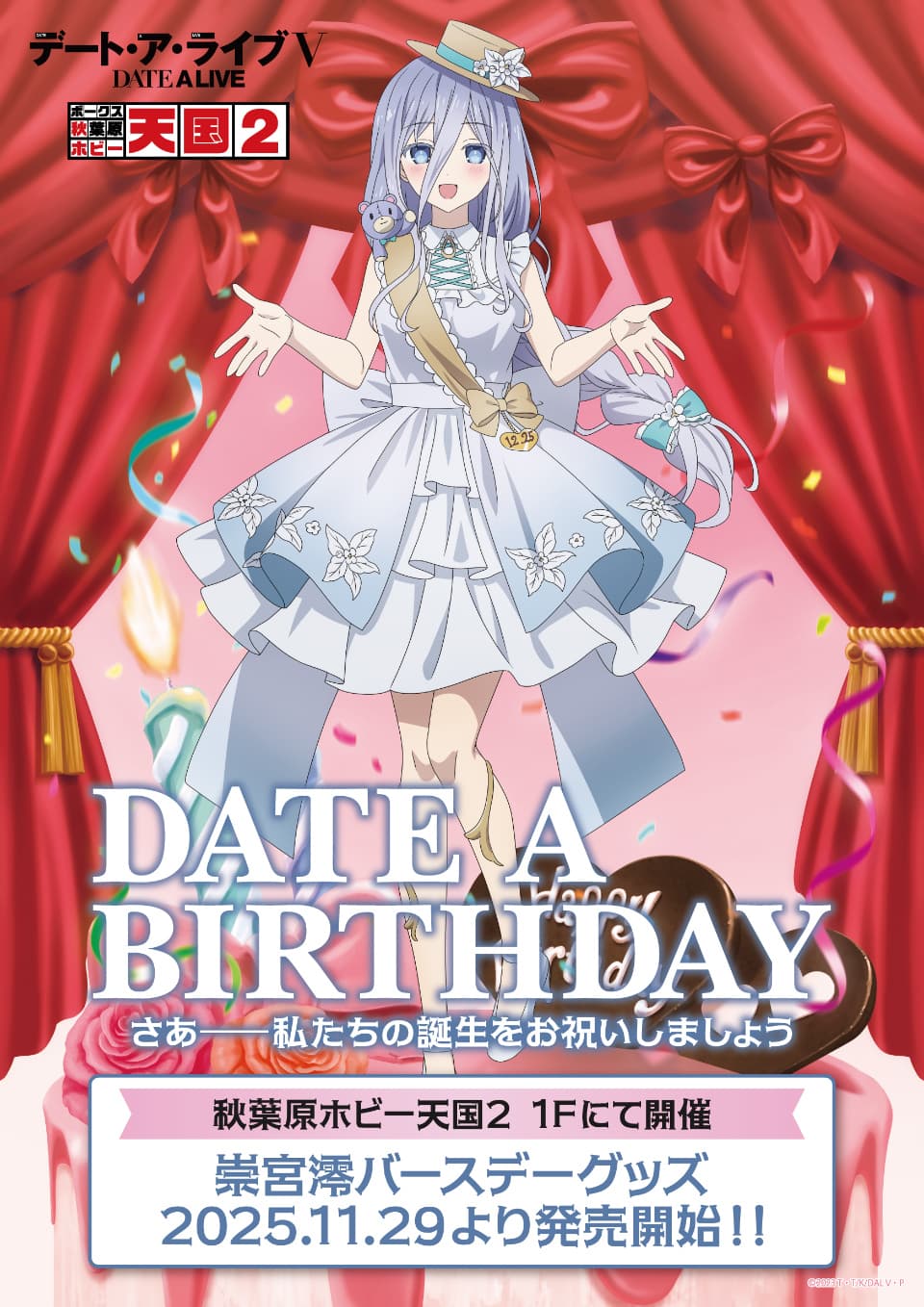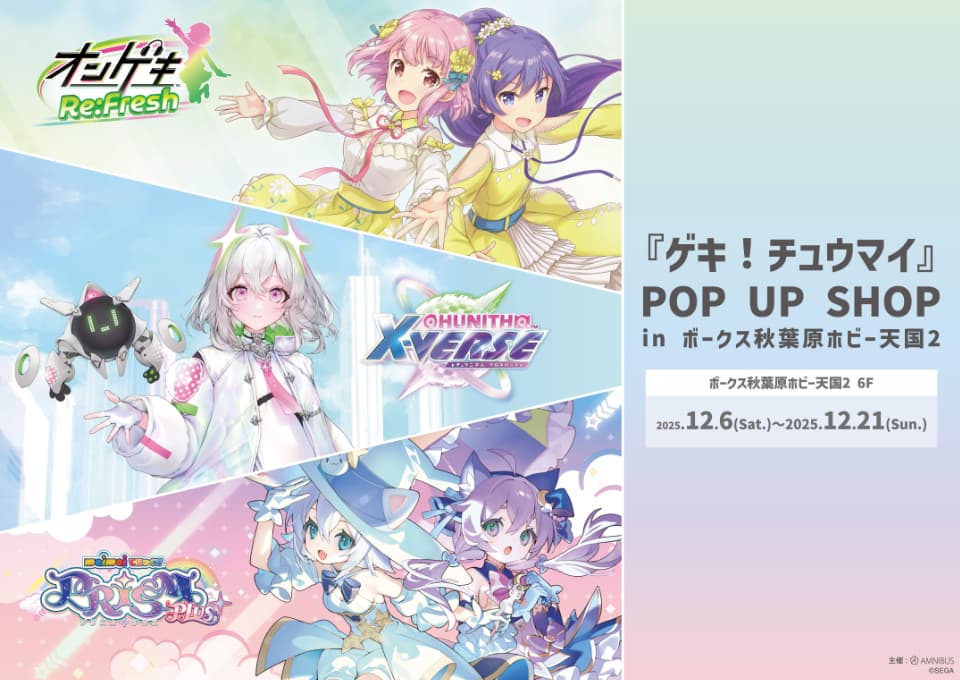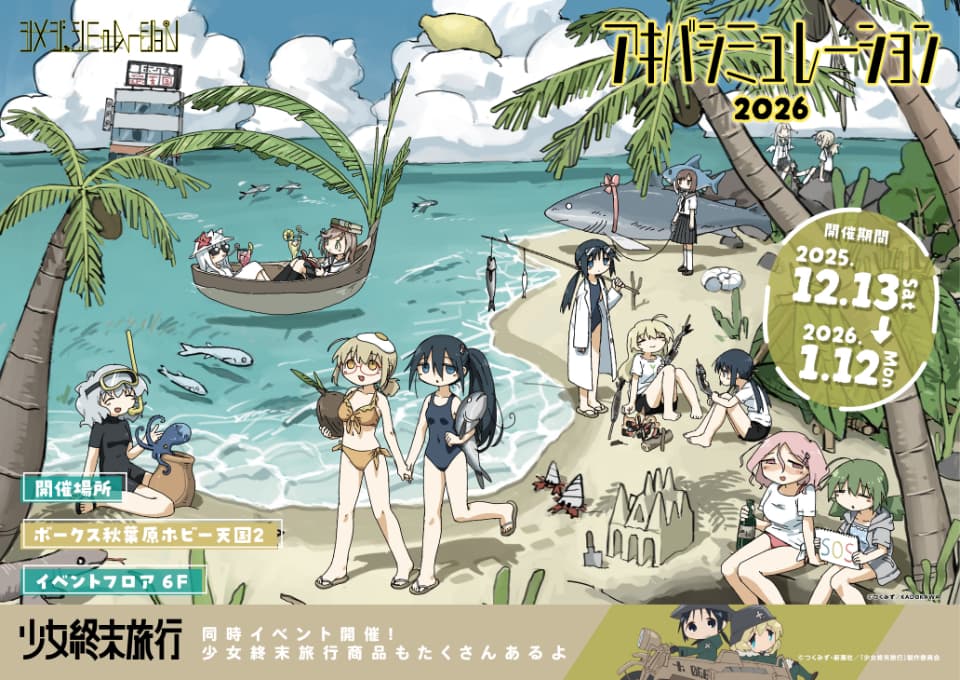Episode of Roselia I: The Promise,” which has been in theaters since April 23, we interviewed general director Kakimoto Kaitai and director Mimura Atsushi. The first film in the “Bandori! series, how did they go about creating the first story-centered theatrical anime? I: The Promise.
(hereinafter referred to as “BanG Dream!”) series. (hereinafter referred to as “BanG Dream!”) series, this work depicts the secret story of the formation of Roselia, a band that appears in the (hereinafter referred to as “Bandori!”) series. Girls Band Party! (hereinafter referred to as “Galpa”), and the event stories have been reconstructed and made into a film that fans will not want to miss.
(hereinafter referred to as “Galpa”). For the first time in the “Bandori! series, how did you go about creating the first story-centered theatrical anime?
How did they create the first story-centered theatrical anime in the “Bandori!” series? We also got a behind-the-scenes look at the process of creating the scenario, which they say was a “concerted effort,” their attention to costumes and hairstyles, and the camera work used to bring out Roselia’s personality.
|The response we felt after the release
–Episode of Roselia I: The Promise” has finally been released. Have you been checking out the reactions from fans?
Mimura: I’m the type of person who usually does an ego search (laughs), so I check social media to see what people think. When I saw comments like, “The live scene was great,” or “I cried watching the movie,” I felt that I had made a good film.
Kakimoto: I’m not very good at ego tapping, so I don’t do it very often (laughs), but I’ve received a lot of positive feedback from people. (laughs) When I was having a launch party by myself after the movie was released, some people replied to me on Twitter, and I was grateful.
When I was eating tuna sushi, I received a comment saying, “It’s Lisa’s color!” I thought that I was indeed a bandleader for associating the red color of tuna with Lisa lol
I also want to enjoy the finished film with my fans, so from now on I want to go see it as a spectator.
–Kakimoto-san is the general director of this film, and Mimura-san is the director. What are the roles of the two of you?
Kakimoto: I was in charge of pre-production (planning, scriptwriting, storyboarding, etc. before actual production) and final checks, and Director Mimura was in charge of on-site layout checks and storyboard checks.
At the time the decision was made to produce this film, there were several other “Bandori! at the same time, so it was difficult for me to direct everything by myself.
So I consulted with the production side and asked Mr. Mimura, who had worked as a supervisor for the anime series and the film version of “BanG Dream! I had been asking him to supervise the live parts, but I felt that I could safely entrust him with the everyday parts as well.
|I wanted to visualize Lisa and Yukina’s childhood.
–Did Bushiroad or Craft Egg give you any orders regarding the content of the film?
Kakimoto: When we were planning the project, we received a clear offer to make a film of the Roselia event story series “Noble Rose” from “Galpa” in the scale of two theatrical anime.
However, “Noble Rose” alone might not have enough volume for a movie. We consulted with Bushiroad and Craft Egg to develop the script, and Craft Egg made a list of lines that we wanted to include in the film, and Bushiroad adjusted the scale and other standard aspects.
–Kakimoto: We had a lot of discussions with Yukina and Lily.
Kakimoto: The reminiscence scene between Yukina and Lisa. In the first episode of “Noble Rose,” “Noble Rose – With Flowers,” there is a scene where Lisa looks back on her childhood with Yukina and writes lyrics.
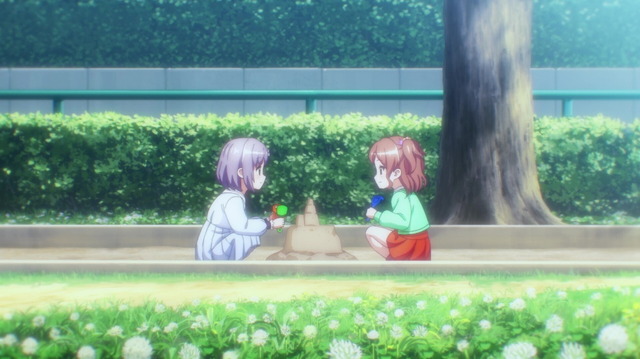
It was also a pivotal scene in the film, so the direction of the project gradually changed to include the encounter between the two and the origin of their music in the film.
–Kakimoto-san, you are also in charge of the script. How did you and Ayana Yuniko, the series creator, share the roles?
Kakimoto: Ayana-san and I have been working together on the story since the beginning of the anime series, so this time we consulted and worked out the content in the same way.
He also helped me when I was having trouble keeping the story short. Since this work depicts not only Noble Rose but also the Roselia band story from “Galpa”, I had a hard time adjusting the volume.
Whenever I was in doubt about the choice of scenes and dialogues, I went back to Noble Rose, the main focus of the story, and picked up episodes that were closely related to it. For example, I wondered which episodes were related to Lisa’s feelings as she wrote lyrics.
Even then, we couldn’t fit it all in, so I asked Ayana to take the script back to me once and suggest parts that could be cut. Looking back on the script writing process now, it was really a concerted effort.
–Indeed, the story is full of elements such as Roselia’s formation, conflict, and growth.
Kakimoto: In the beginning, we had planned to make the first chapter of the band story a short digest, and spend more time on the second chapter of the band story. However, when I looked at the story as a whole, I realized that the formation process was important.
It was the part where the members’ personalities before they became Roselia really came out, so I wanted to portray each of them more fully, and as a result, the scenario became much larger than I expected.
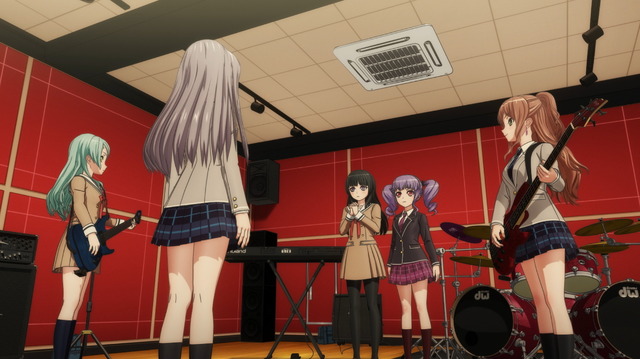
I also had an idea to have the ED at the end of the second chapter of the band story, which is the most emotional part of the whole movie. However, since the basis of the project was to depict the Noble Rose episode, I didn’t want to remove that part of the film. That’s why you may feel as if you’re watching two movies in one.
――Did you conscious of how the emotions of the customers move throughout the movie?
Mimura: At the meeting of this work, we proceeded while drawing the viewer’s “emotion curve” on the whiteboard.
Be aware of the waves such as “Let’s raise the emotions of the customers here and make them feel serious in this scene.” The passage of time and the position of emotions in the movie were well depressed at the time of the scenario.
Kakimoto: I wanted to create a script that would serve as the basis for the video. In this work, the flashback scene and the current time axis are mixed, but I wanted to make a film that does not interrupt the feelings of the characters.
Instead of suddenly jumping emotions, I make it so that I can convey what the members were thinking even during the time when it was not drawn.
–How did you plan to portray the other bands? How did you plan to portray the scenes involving other bands?
Kakimoto: In the second chapter of the band story in “Galpa,” when Yukina is lost, Kashumi helps her out, and the relationship between the two is very dramatic. I wanted to recreate the feeling I had when I read the story as much as possible in the movie.

However, there were some lines that had to be cut due to the length of the film, so I tried to portray them in a way that only a video work can, so that the audience can feel them through the music, facial expressions, and gestures.
|The heat of the cast that I felt during the recording
–How was the atmosphere of the postrecording?
Kakimoto: Since the scene had been performed once in the game, the cast members were very emotional about it. They remembered how they felt at the time of the game recording before coming to the movie recording, so we, as the ones who were directing them, were not too overwhelmed and tried to give them our usual reactions.
We didn’t go into too much detail, just explaining what role the scene would play in the film as a whole.
I was also impressed by the many ad-libs that were used, because with CG animation it is possible to record the voices first and then create the images, so ad-libs were actively reflected.
Basically, we tried to make the best use of the performances of the cast members who have made Roselia what it is.
It’s just my impression from the outside, but I think the cast of Roselia has become much thicker in their performances compared to the beginning. Each breath and persuasiveness of the lines are more in line with the timeline of the play, but also give a sense of what is to come. The acting plan throughout the film was clear, which I really appreciated.
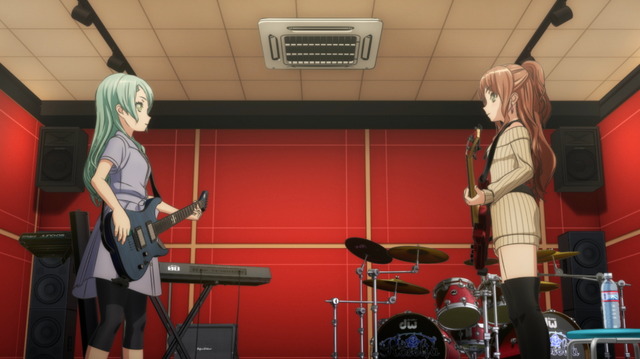
–Kakimoto: Megu Sakuragawa as Ako was recorded alone, and the rest were recorded separately.
Kakimoto: Megu Sakuragawa, who plays Ako, was recorded alone, and the rest were recorded separately. 5 members of Roselia have been working together for a long time, so we were surprised to find that even when we recorded separately, we were able to improvise perfectly.
Depending on the recording schedule, we might have to bring in some candidate lines for the parts that were originally instructed to be improvised in the script. But when I asked them to perform without giving them any lines, the content was very good.
There were many cases where we discarded our plan and just adopted the cast’s performance.
|Delicate staging that accentuated Roselia’s character
–The timeline of this work is earlier than the previous anime series and “BanG Dream! Was there anything that you paid attention to in terms of visuals?
Mimura: I was especially conscious of the differences in facial expressions. For example, I tried not to make Yukina’s expression too soft. Especially in the beginning, I tried to keep the tense atmosphere, and in the end, I tried to soften her expression a little.
In order to portray the movement of emotions delicately, I tried to avoid overly flashy theatricality and added detailed theatricality to each part. I had to use a close-up camera to fully express the characters.
The angle of the eyebrows is also drawn in detail, so I think the range of expression has expanded since the time of the anime series. I gave detailed instructions to the animators with an emphasis on characterization, and brushed up the work through a series of last-minute revisions.

Kakimoto: With Poppin’Party, you can easily identify their emotions and characters by their full-body poses, even if they are projected from a distance. But Roselia has a different direction, so we used more close-ups of their hands and feet as well as their faces to pick up the subtleties of their emotions.
I also introduced a new filter to convey the essence of Roselia in the video. In the reminiscence scenes, we controlled the overall color tone so that it wouldn’t be too flashy, so please pay attention to it.
–Mimura: I felt that the scene where Rinko and Akoto run away during practice was very challenging.
Mimura: I felt the scene where Akoto and Rinko run away during practice was very challenging. The animators worked on it with a lot of enthusiasm, so I think it turned out to be a spectacular video.

Kakimoto: I was helped not only by the CG animators, but also by the work of the drawing staff. The crown of white clover that Yukina made in her childhood was all hand-drawn by the drawing staff, and the scene in the ED where the pattern of the white clover gradually changed into a blue rose was also a highlight.
Shinsuke Ikeda, who was in charge of the 2D works, was also a big help. He added the bubbles of carbonation and the gloss of the cups, which made the accessories even more beautiful.
I was really surprised when I gave him the material for a plain white cup and he added a luxurious pattern to it. In the past, it was difficult to depict details in the anime series, but since it was a movie, he took the cuts himself and steadily brushed them up.
Mimura: Mr. Motomu Endo, the CG director, also helped me a lot. There were a lot of young animators on site, but I think the quality of the animation was improved by Endo’s detailed instructions.
|A sense of presence and realism that I tried to achieve in live scenes
— “Bandori! is also popular for its live performance scenes. What did you focus on in this work?
Mimura: In the live scenes, we used more camera work than in the anime series, and the lighting was more flashy. In the camera work, we used a lot of aggressive compositions with the camera pointing down from a low position in order to give the impression of Roselia’s strength. This makes the characters’ presence seem bigger.
Also, I had previously made a music video for Roselia, so I tried to follow the atmosphere of that time and create a realistic feeling that only a live performance can provide. We tried to make it look as if the audience was there and Roselia was performing.
Kakimoto: In music videos, it’s possible to insert short cuts between the performance scenes, as if you were in another place. But for the live scenes, we asked for footage that could only be shot in the actual location.
Mimura: That’s why we don’t do things like shoot through walls. We try to create images that can definitely be shot at a live venue by making full use of the equipment.
Kakimoto: We tried not to get too close to each other by being aware of the size of the stage and the width of the equipment.
Also, Roselia is a band that places more importance on performance technique than others, so we included many shots of the band’s hands during the live performances. For the movie version, I had the crew create the movements of the hands in more detail than ever before.
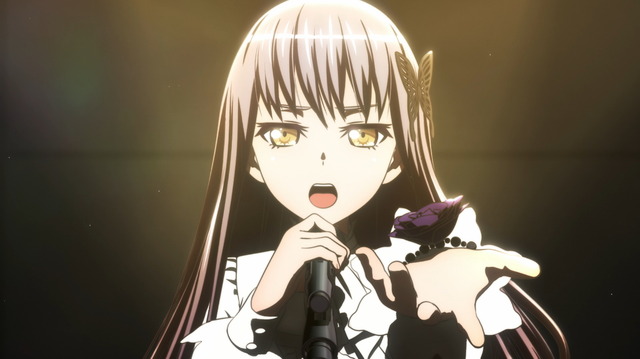
–In the live scenes, motion capture is used to add movement. Is there anything that you kept in mind while creating the scenes?
Kakimoto: I was conscious of the balance between the pursuit of realistic movements and the pleasantness of the animation expression.
Mimura: Even if you incorporate motion capture as it is, it may end up looking unnatural as animation.
For example, in the case of this work, the head is larger in the live action than in the animation, so we had to adjust the life-size. For example, the head is larger in the live-action version than in the animated version, so we had to adjust the body height. We also had to adjust the twist of the waist, which is not a problem in the live-action version, but in the animated version, the swing and tilt of the body are too large.
Then there was the gradual and rapid movement. When live-action images are used as they are, there are parts that are too realistic for animation and end up looking slimy. In order to avoid this, I cut off a frame or so to make the animation look more pleasant.
–What kind of instructions do you give to the actors who perform with motion capture?
Mimura: Some of the actors have been with us since the beginning of the anime series, so I just explain to them how the story will unfold, and basically leave the movements to them.
When we shoot motion capture, we combine it with the model in real time and check how it moves when combined with the costume. That way, we can see where the costumes are swinging too much and becoming too flamboyant, so we can make minor adjustments on the spot, such as asking them to suppress their movements.
Kakimoto: The actor who plays Yukina has studied Aina Aiba’s movements very well and used her choreography from the real live performance as a reference.
Even if the song has not been performed live yet, Aiba-san will suggest the choreography before the anime version is decided. I ask the actors to recreate the choreography as faithfully as possible.
In particular, they were very particular about the movements of the fingertips, which are characteristic of Aiba’s choreography.
Mimura: The animators made manual adjustments for finger movements that could not be picked up by the sensors. Even so, it was impressive to see the actors’ attention to the tips of their fingers.
|To convey the meaning behind the costumes.
— “Bandori! also has attractive costumes with detailed decorations. How did you go about creating the new costumes in this game?
Mimura: In this work, we changed the hairstyles to match the costumes in Chapter 2 of the band story. Actually, changing the hairstyles would have required as much work as creating another 3DCG model.
However, if the costumes were changed but the hairstyle was the same as before, the audience would be turned off. That’s why we decided from the beginning to change the hairstyle to match the costumes.
Kakimoto: I’m glad we were able to do this, especially for the second chapter of the band story, because the costumes themselves have a deep meaning.

Mimura: The accessories were very detailed and difficult to make, but I knew I would be wearing them in an important scene in the movie, so I asked the staff to do their best. The costumes in “Bandori! costumes have a lot of overlapping parts, and there is a lot of preparation to make them move. The costumes are so dense that it becomes difficult to make the girls hold their instruments.
Kakimoto: Roselia’s costumes are probably the hardest to make because of all the swaying dresses and accessories (laughs). I hope you’ll take a look at our staff’s hard work.

–Please tell us what you focused on in the OP and ED.
Kakimoto: For the OP, I had the song written with the image of the five Roselia members’ voices intertwining to form a single harmony. That’s why the costumes are based on a choir motif.
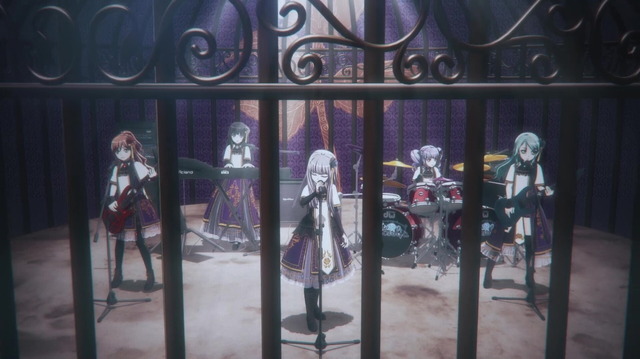
I also included a birdcage in the video. I was conscious of the connection with the flying birds that were the motif of “LOUDER”. In the performance scenes, I tried to show Roselia’s performance as usual, without exaggerating it because it was the OP.
Episode of Roselia II: Song I am.” Rather than ending the song, I imagined it as a continuation of “BanG Dream! I asked them to make it a brave song that shows how Roselia will fight and how they will go about making their dreams come true.
Also, since it was a movie version, I wanted to increase the number of live scenes, so I asked the production to allow me to create another live scene in the ED. I wanted to create an ED that would make the audience want to watch the next movie again.
|I want to portray the members as alive.
–What do you keep in mind when making an anime for the “Bandori! series, is there anything in particular that you keep in mind when making the anime?
Mimura: It’s difficult to answer this question since we’ve been working as hard as we can for a long time. …… But now that I look back, I’ve always tried to never let the characters do anything they wouldn’t do.
For example, I would say, “This member’s facial expression will never change this much. I wanted to portray the characters as they were living their lives as individuals, rather than acting out their gestures and expressions.
Kakimoto: I try to show a new side of the members with each new cut. I wanted the story to progress without stagnation. I’d like to keep trying to compose the story after properly grasping the flow of feelings and events.
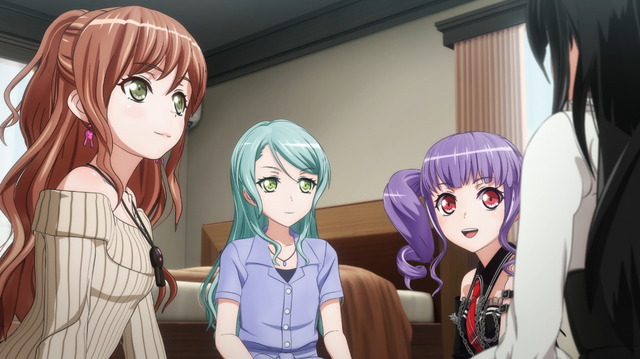
–Finally, please tell us about the highlights of “Episode of Roselia II: Song I am.
Kakimoto: In the next episode, “Episode of Roselia II: Song I am.”, you can enjoy the rapid progress of Roselia as they make their dreams come true. The first part was more of a drama, but the second part will have a lot of live scenes, so please look forward to it.
Mimura: What path will Roselia take and where will they go from here? It’s a story that’s already been shown in “Galpa,” but I’m glad that you can get a closer look at it in the video.
The two “Episode of Roselia” films both focus on Roselia, but they have completely different atmospheres, so please look forward to them.
Kakimoto: There are good reasons for the differences, and the feelings of the members are connected between the two films. I hope you’ll enjoy the two films together.
[speech_bubble type=”drop” subtype=”L1″ icon=”surprise.png” name=”Nazuna”] BanG Dream! Episode of Roselia the Movie I: The Promise I’ve seen the movie! Mark, I’m so impressed by your face. I had goosebumps from the sound of the bell at the beginning. I’m going to love Yukina’s singing voice so much! Roselia is the best! [/speech_bubble]![The Movie “BanG! What goes on behind the scenes? How to portray Roselia in an appealing way, and what to look out for in the sequel [Director’s Interview].](/_next/image?url=https%3A%2F%2Fwp.nerz.jp%2Fwp-content%2Fuploads%2F2021%2F05%2F405535.jpg&w=3840&q=75)
